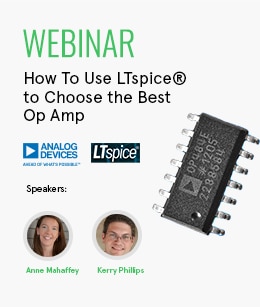Dimmer circuits consisting of Phase Angle Control are used to efficiently adjust the AC power delivered to the AC loads by controlling the conduction angle. In this episode, Surbhika developed such a circuit to enable dimming of commonly used AC lights bulbs at home. This was an interesting DIY project as it meant realizing one of the fundamental concepts in power electronics and control theory to generally usable hardware.
Watch the Video:
Bonus Content:
 |
 |
Bill of Materials
| Product Name | Manufacturer | Quantity | Buy Kit |
|---|---|---|---|
| RASPBERRY-PI Raspberry Pi Pico Board, RP2040, 32 bit, ARM Cortex-M0+ | RASPBERRY-PI | 2 | Buy Now |
| MULTICOMP PRO TERMINAL BLOCK EUROSTYLE, 2 POSITION, 26-16AWG | MULTICOMP PRO | 5 | Buy Now |
| ONSEMI Optocoupler, Triac Output, DIP, 6 Pins, 5.3 kV, Non Zero Crossing, 400 V | ONSEMI | 1 | Buy Now |
| VISHAY Optocoupler, Transistor Output, 1 Channel, DIP, 4 Pins, 50 mA, 5.3 kV, 160 % | VISHAY | 1 | Buy Now |
| WEEN SEMICONDUCTORS Triac, 800 V, 16 A, TO-220AB, 1.5 V, 170 A, 45 mA | WEEN SEMICONDUCTORS | 1 | Buy Now |
| BOURNS LINEAR POTENTIOMETER, 10KOHM, 20%, 50mW | BOURNS | 1 | Buy Now |
| PHILIPS LIGHTING LED Light Bulb, Reflector, GU10, Warm White, 3000 K, Dimmable, 36° | PHILIPS LIGHTING | 1 | Buy Now |
| ETERNA GU10 Lampholder with Flying Leads | ETERNA | 1 | Buy Now |
| LEDVANCE LED Light Bulb, Reflector, GU10, Daylight White, 6500 K, Not Dimmable, 36° | LEDVANCE | 1 | Buy Now |



Top Comments
-

Workshopshed
-
Cancel
-
Vote Up
0
Vote Down
-
-
Sign in to reply
-
More
-
Cancel
-

surbhika
in reply to Workshopshed
-
Cancel
-
Vote Up
+1
Vote Down
-
-
Sign in to reply
-
More
-
Cancel
Comment-

surbhika
in reply to Workshopshed
-
Cancel
-
Vote Up
+1
Vote Down
-
-
Sign in to reply
-
More
-
Cancel
Children